This post is also available in: Kreyol
There has not yet been any mass deportation. There are, however, discreet deportations happening in the early hours of the morning and late at night, when there are no eyes around to witness.
Malpasse is the biggest border between Haiti and the Dominican Republic. Malpasse is located 1 hour away from Port-au-Prince, and is the site of the majority of the trade between the two countries. I arrived at the border on June 17th in, the evening, after the registration deadline given by Dominican immigration to the Haitian immigrants expired. I am here with my team, Kombit Productions, and we have partnered with various international media outlets to cover what is going on.
These are 6 things I have observed during the past few days I have spent at the border:
Deportation: There has not yet been any mass deportation. There are, however, discreet deportations happening in the early hours of the morning and late at night, when there are no eyes around to witness. The people being deported so far come from the Baroana and Neyba areas. Some of them were arrested, and others, according to a family I met, were chased out by Dominican civilians who then stole all of their belongings. The Jesuit group that works with Dominicans of Haitian descent here estimate that about 30 people were deported a few hours before the given deadline. Many people have decided to leave to Haiti voluntarily before being deported forcefully. Not everyone being deported is Haitian, some are Dominicans who were born in the Dominican republic. One of the deported people I met told me that a Dominican soldier ripped up his citizensihp papers before arresting him in Neyba.
Andre Joseph, 53 lived in the DR for 40 years. Deported 3 days ago, and his Dominican neighbors stole all of his belongings.
Security: The border has no structure, especially on market days. There is more security in the Dominican areas, the Dominican soldiers occupy every little space. Currently, you will find camera equipment and news crews facing the entrance of the border, and there are military patrols situated every 200 meters or so. On the Haitian side, there are not many police. Yesterday, I counted only 3 police officers. Today the number has increased, there are about 10.
Journalists waiting outside the border’s chief office on the Dominican side of the border to learn about the deportation process
Business: The Haitian vendors undergo a lot of harassment by the Dominican military. To cross the border, they have to pay off the soldiers, and sometimes even thieves, in order to circulate and go about their days with no problems. Despite the current immigration crisis, business goes on as usual between the two countries. Market days are functioning as usual: Haitians come to purchase, and Dominicans come to sell. There are several hundred containers of merchandise lined up to come into Haiti as it happens almost everyday.
Detention center: The Dominican military has a detention center serving as a holding place for people prior to deportation. It is a military base that used to be a prison. Despite much effort to gain access to inside the detention center, Dominican soldiers has refused to give journalists access to this space.
Detention center inside a military base in Jimani where the DR government has detained migrants before deportation.
The repatriation situation: There are no official arrangements to receive the refugees in Haiti. The place that the Haitian government has designated to receive people is still under construction. There are no preparations to provide care for people with potential health issues, or psychological or emotional support available for the repatriated. Right now, there is a Jesuit NGO, Service Jesuite aux Migrants, serving as the main source of support for 26 refugees that Dominican soldiers released to the border on June 17th. The Jesuit group help those who have family reconnect with them, and have placed those who have nowhere to go in a community school in the area. The school has no structure to properly receive the people, the people sleep on the floor and go without treated water or food.
Current situation: The Malpasse border is functioning normally, but anything can happen at any moment. The Dominican press is present at the border, along with various international media outlets such as the Associated Press, reuters, and Al jazeera. There are a few Haitian media outlets present but not many. I plan to stay at the border for a while and visit other more isolated borders because it is possible that people are being deported from these secluded borders away from the gaze of the press, with less trade and traffic (areas such as Penal, Eliaspinas and Dajabon.)
Space designated by the Haitian government to receive the repatriated. Still under construction.
This post was originally written in: Kreyòl

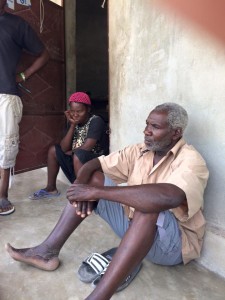
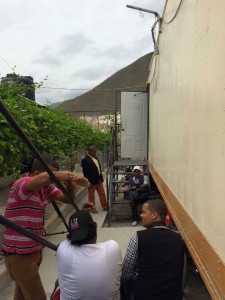
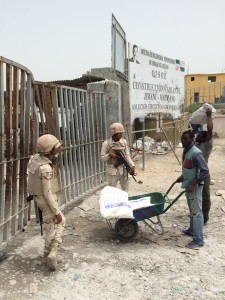
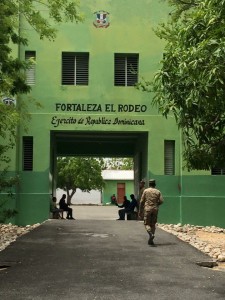
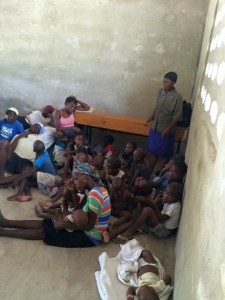
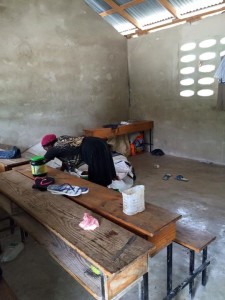
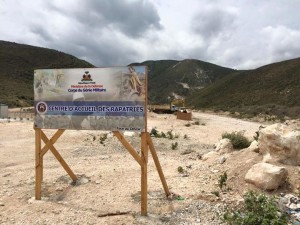
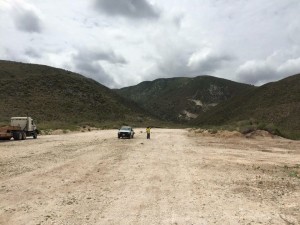
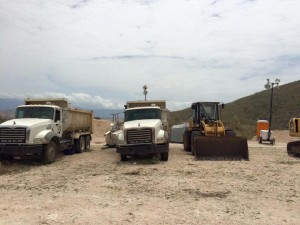
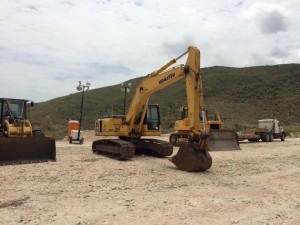
As a haitian, I blame the haitian government and the haitian people not the dominican goverment. At first I was upset then I collected my thoughts. The dominican goverment has done and is doing what it needs to do for its country to progress and the haitian goverment and it’s people have not. We got our independence and gave them their independence. We sat back and watch them build their country from the ground up and we are still watching. The dominican goverment does not allow it’s citizen to cut trees yet we cut ours like nothing, they have sewers so when it rain the water drains and does not cause deasease and bacteria, we have no sewers.they build highways and even have subways in their cities yet we are still looking over the border and,doing nothing. They give us visas and we let it expire and get confortable as if this is our land when it’s not. I understand that they are also a poor country and if they allow all our our illegal brothers and sisters to become citizen it’s basically taking oportunity from their people. Why should I feed your family when you can? Again the haitian goverment is to blame, I gave up blaming them for the terrible situation that is happening between the two countries and blame the haitian and the people. The Bahamas is doing the same thing to the haitian people and the Americans are deporting illegal immigrants as well. I just say get the fuck out of their country and fix our own country because they did what they had to do and doing what they need to do. Let’s start by educating our people the importance of not cutting trees. Please sit back and think before you blame them when we need to blame ourselves .
I totally agree
with the article. I think this is a wake call to our Haitian government and our people. It’s time to starts building our nation and stop pointing fingers. If we don’t builds it, who will?